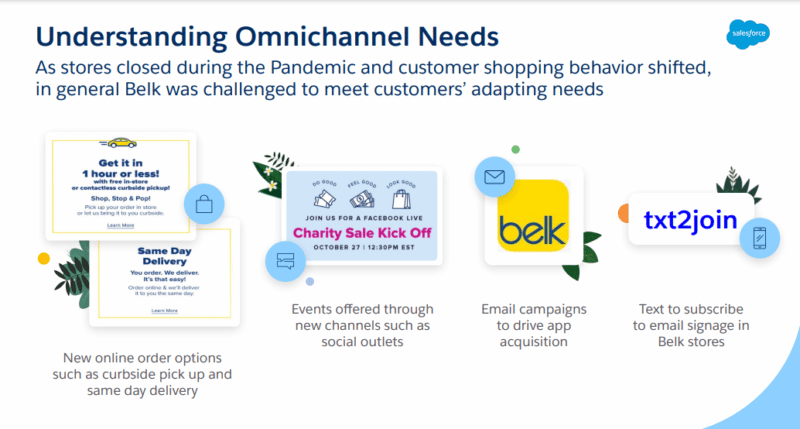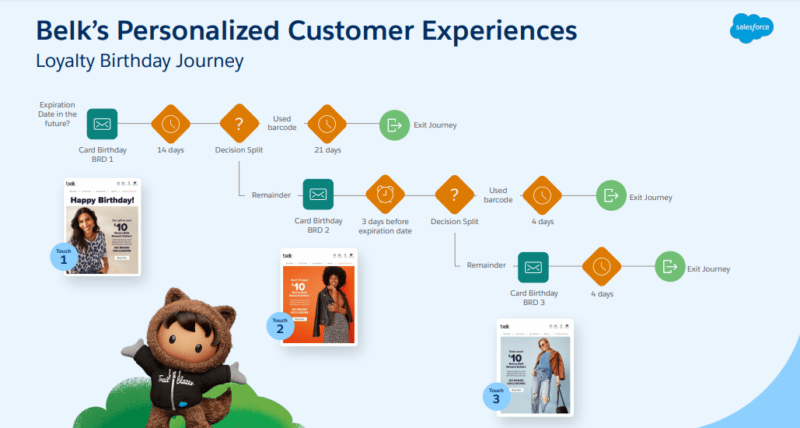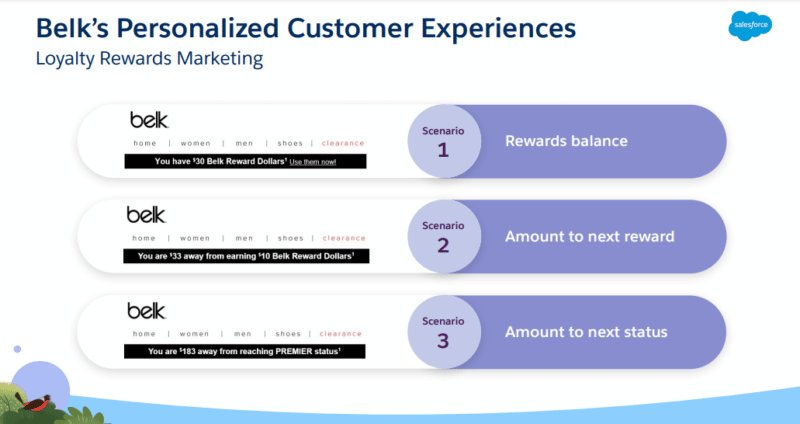
“We all know that companies are being challenged to rethink how they engage with increasingly connected, empowered, and discerning customers,” said Veda Kumarjiguda, senior product marketing manager at Salesforce, in her presentation at The MarTech Conference. “From Salesforce’s State of the Connected Customer report, we can see that 74% of customers have used multiple channels to complete a transaction, 76% of customers prefer different channels depending on the context, and 66% of customers have used multiple devices.”
She added, “I like these stats because they show that omnichannel communication is expected and they also show the uniqueness of each subscriber.”
High-quality, customized brand experiences are what customers expect in today’s digital landscape. As part of its effort to improve these interactions, Belk worked with Salesforce to deliver more personalization.
Understanding omnichannel needs
“A vital part of marketing is understanding the customer’s omnichannel needs,” said Colby Ireland, lead marketing analyst at Belk, in the same presentation. “This comes to life in a few different forms. The first of that being two new delivery methods that we have established in the past couple of years, one of which was curbside pickup.”
Belk also addressed these omnichannel needs through same-day delivery options, responding to customers’ need for immediacy.

“In-store, we’re always trying to drive email signups,” Ireland said. “There are signs where customers can text a specialized number with their email address and then automatically be subscribed to our email programs.”
“We’ve seen a lot of new email subscribers through these signs,” she added.
Belk clearly adapted well after the pandemic hit — but it wanted to go beyond simply meeting omnichannel needs. It wanted to increase personalization across all customer experiences.
Personalized customer experiences
“One of Belk’s most engaged segments is our credit card holder,” Ireland said. “We currently have over 2,000,000 active email subscribers who also have the Belk credit card. These customers typically have the Belk app on their phones. They follow Belk on social media, and they make frequent shopping trips to their local Belk.”
To thank these customers for their loyalty and improve personalization, Belk set up an email marketing campaign that recognized birthdays. The marketing team created a customer journey that gives customers a unique coupon they can use on anything in the store during their birthday month. The coupon is sent on the first day of those months, and if a customer doesn’t use their coupon code, they receive another reminder a few weeks later.
If the customer still doesn’t use their personalized coupon, Belk reminds them about it a few days before it expires. After the month ends, the customers who haven’t used the coupon are removed from the journey.
These highly personalized email campaigns show customers Belk cares about their needs, both in the customized coupons and its willingness to let customers leave the funnel if they’re not engaging.
“Because of this personalization, we have seen great results, including an over 6% increase in conversion rate for each touchpoint,” Ireland said.

Ireland and the Belk marketing team also employed a rewards balance system that keeps customers informed about their unused benefits.
“We will show a customer if they have any rewards dollars that they can use for their next purchase,” she said. “If a customer doesn’t meet that first scenario, we then move on to the second scenario, which would show them how much they actually need to spend to earn that next reward, and if neither scenario is met, we show customers how much they would need to spend to move up to the next tier.”
“These [messages] have increased conversions for our daily marketing campaigns by about 5%,” she added.

Tactics like these can help keep customers engaged, improving their experience and encouraging buy-in.
Relevant content for each marketing channel
Brands engaging with audiences on email, social media, or any other marketing channel need to make sure their communications resonate with audiences. The messages and medium marketers choose should be based on customer preferences and their marketing goals.
“You have to think about it from a perspective of the actual intent behind the messaging,” Ireland said. “Email and SMS are retention channels, and we’re very transactional. We’re trying to drive the customers to convert. We’re trying to keep them happy trying to retain them and so our content is a little bit more geared toward that objective versus social media.”
She added, “I think it all comes back to personalization, having that data on the customer and seeing what channel they prefer.”





